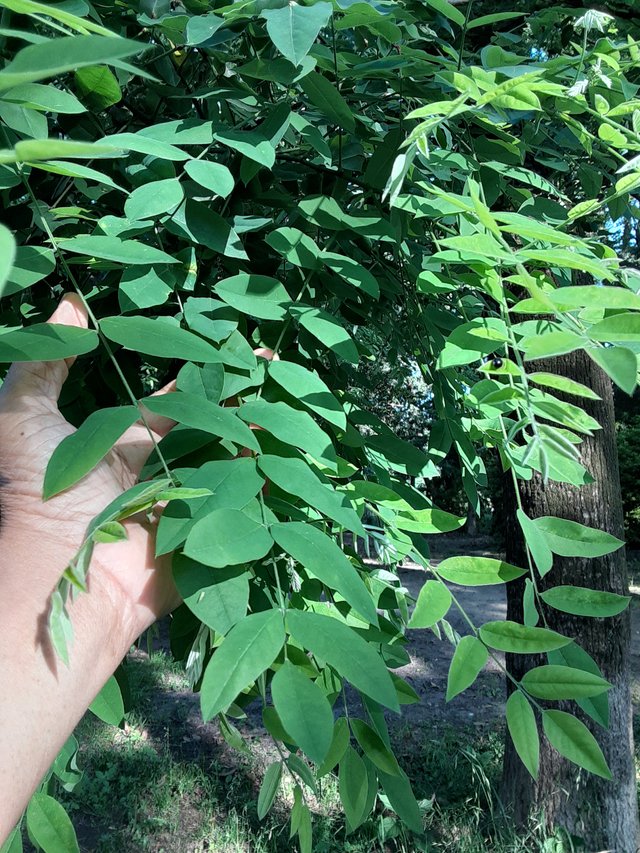
Robinia pseudoacacia, also known as the black locust or false acacia, boasts a unique and interesting leaf structure. Here's a closer look:
Compound Beauty: Unlike simple leaves with a single blade, Robinia pseudoacacia features pinnately compound leaves. Imagine a central stalk, called the rachis, acting like a highway for leaflets. These leaflets, ranging from 7 to 21 in number, line up in pairs on either side of the rachis, creating a feathery appearance.
Size and Shape: Each leaflet is typically 1.5 inches (4 cm) long and boasts a rounded or slightly indented tip. The base of the leaflet is usually rounded as well. This roundedness softens the overall look of the leaves, adding a touch of elegance to the tree.
Color Contrast: The upper surface of the leaflets displays a rich dark blue-green color, perfect for absorbing sunlight for photosynthesis. This dark shade creates a beautiful contrast with the lighter underside, which often appears a pale green or even slightly blue-green.
Seasonal Show: Robinia pseudoacacia is a deciduous tree, meaning it sheds its leaves in the fall. But before they depart, the leaves often put on a final dazzling display. The dark green color can give way to shades of yellow or gold, adding a touch of autumnal charm to the landscape.
Thorny Companions: Interestingly, you might find a pair of stipular spines at the base of some leaves. These spines are actually modified stipules, which are small structures typically found at the base of a leaf stalk. In the case of Robinia pseudoacacia, these stipules transform into thorns, possibly offering the tree some protection from herbivores.
Leaf Variations: While the standard Robinia pseudoacacia boasts the dark green leaves described above, several cultivars offer unique variations. The 'Frisia' cultivar, for instance, features bright yellow-green leaves, adding a splash of sunshine to any garden.
Overall, the leaves of Robinia pseudoacacia play a vital role in the tree's life cycle. Their compound structure maximizes sun absorption for photosynthesis, while their seasonal color changes and potential thorns contribute to the tree's overall beauty and resilience.
Ref.:
 |  |
Upvoted! Thank you for supporting witness @jswit.
Downvoting a post can decrease pending rewards and make it less visible. Common reasons:
Submit